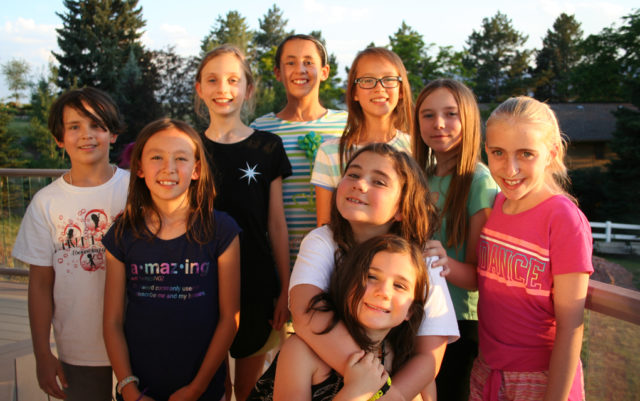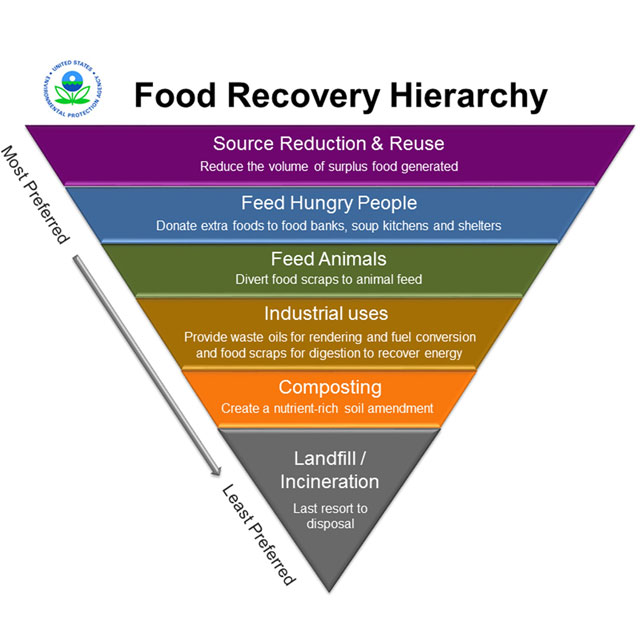
As the new school year begins and Colorado kids return to classrooms, Region 8 of the Environmental Protection Agency (EPA) has an action plan to combat food waste in public schools across the state.
Every day, Americans waste enough food to fill the Rose Bowl. Discarded food is the largest portion of material in landfills, and when it’s trapped between other junked materials, food waste decomposes anaerobically (without oxygen), creating the greenhouse gas methane in the process. According to Virginia Till, recycling specialist with the EPA, most food waste in landfills could have been donated or eaten. And seeing as 14 percent of Americans lack reliable access to affordable, nutritious food, she says, it’s time to change our attitude surrounding food waste, starting in K-12 public schools.
“The research done so far … is that most of that waste occurs at the consumer level. So obviously educating kids is a really great way to go, and that can also impact families,” Till says. She helps schools find opportunities to donate excess food and advocates for alternative ways to use food, such as harnessing the production of methane from food scraps to create energy, and converting wasted oils into fuel.
This education and outreach has led many schools in Colorado to show interest in combating food waste. Aurora School District worked to donate more than 30,000 servings of food to food banks and food pantries in 2015, while the Poudre School District conducted a study with Colorado State University’s Department of Food Science and Food Nutrition and the U.S. Department of Agriculture to measure food waste in cafeterias.
Ghita Carroll, sustainability coordinator for Boulder Valley School District (BVSD), points out the district’s partnership with Eco-Cycle, and its Green Star Schools program, which focuses on zero-waste goals through education and awareness within their 46 school partners.
“It is unique nationwide because we collect food waste in the cafeterias and classroom,” Carroll says. “The message there is take what you can eat, eat your food, but for that wasted food we can’t do anything with, we have that compost available.”
Although composting has become the go-to solution to food waste, according to the EPA’s food recovery hierarchy, there are many options to divert food waste before it is relegated to compost bins. These include reducing the amount of extra food, giving away uneaten food, feeding animals and finding industrial uses.

Last year at Douglass Elementary School, nine students decided to reduce food waste before composting by creating share tables in the cafeteria. At these tables, students could leave unwanted fruit for others to pick up and eat. The effort was lead by the school’s food waste club, which circulated a survey asking students about their food likes and dislikes. They also created a video and hosted a food waste day where club members used fun activities to educate their fellow students about food waste. And their efforts were successful: By the end of last school year, Douglass Elementary had reduced food waste from 80-100 pounds a day to 60 pounds a day.
This achievement earned the students the EPA’s Presidential Environmental Youth Award, which recognizes environmental stewardship programs by youth in the United States. In the future, the students in the food waste club hope to not only continue the program but expand it as well.
“We want to try and stop food waste, maybe not just at our school but at BVSD, and it can keep growing and growing,” says Maddie Romine, who starts fifth grade at Douglass this fall.
The Green Star Schools Program also recommends other food conservation strategies, like serving bulk milk instead of individual cartons, to continue reducing waste across the district.
Till points to other, less obvious ways the EPA says food waste can be reduced in public schools.
“For example, having recess before lunch. There’s also ‘offer versus serve’ strategies so kids have more choices. Another emphasis should be on connections to farm-to-school efforts … there’s less food waste because the kids are more connected to their food.”
The implementation of food waste reduction strategies set forth by the EPA, school districts, local organizations and students like the group at Douglass are establishing a new flavor of conservation in the places the future of our country spend the most time — public schools.














